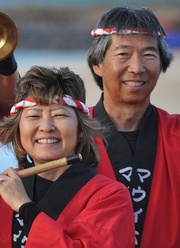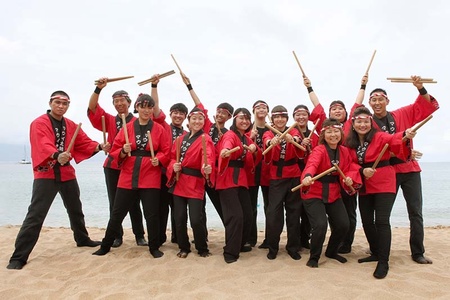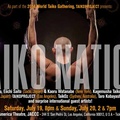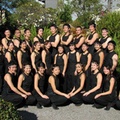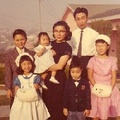“As we share our culture and learn about others, we can choose to live harmoniously,” Kay Fukumoto of Maui Taiko shares her taiko philosophy. “We are all one people on one earth. Peace begins inside each of us. If we focus on it as an end goal, we can surely make progress to that end.”
Know where you come from. Appreciate your past. Respect it. Share it with others. These are the lessons most take away from Great Grandfather’s Drum, a documentary that continues to play a role in fixing the lack of Japanese American Hawaii history learned in schools. In this documentary, filmmakers Cal and Victoria Lewin tell the story of the Japanese people in Hawaii through the experiences of Maui Taiko and its community members. As Cal Lewin explains, “Weaving the past and present together was a central theme of the film. We felt that by telling the history through the experiences of Kay’s family, Maui Taiko and others, the history would come alive and be more real to viewers, and show the connections between history, traditions and people’s lives today.”
The film was a community effort, across all generations. Fukumoto recalls, “The film was created with all the interviews… to tell the complete story of the history of the Japanese in Hawaii.” With these interviews, Victoria Lewin comments, “the audience gets to know the people in the film and relate to their experiences. Victoria believes, “if you get to know someone, it makes stereotyping less likely.”
The stories serve as a history lesson and a reminder to audience members to appreciate their ancestry and the sacrifices made for them. Fukumoto comments on Maui Taiko’s trip to her grandmother’s home in Japan, “I wanted everyone to know how the first generation lived; to instill in everyone, especially the young ones, that our fortunes today come from the sacrifices of others. The film shows the strength of the immigrants to Hawaii and the future that has developed due to perseverance and hard work.”
Fukumoto has been passing down her heritage since she was in college. When she returned to Maui in 1983 and discovered that few young people were participating in obon, she personally sought places to teach Fukushima Ondo, the song and dance passed down to her community from Fukushima, Japan. Since then, it has been Maui Taiko’s mission to “perpetuate the Japanese culture to continue to honor the sacrifices of past generations.”

Maui Taiko members. They are going to northern Japan next June to perform at various disaster affected areas. (Photo by Jeffrey Soga)
Fukumoto gives recognition where recognition is due when it comes to her inspiration to play taiko well. She credits some of the iconic and respected taiko leaders she has learned from, such as “Faye Komagata, Roy and PJ Hirabayashi, Seiichi Tanaka, Kiyonari Tosha, Marco Lienhard, and Kenny and Chizuko Endo.” Just as there are many role models that have influenced Maui Taiko artistically and musically, there are many role models that have influenced the members of Maui Taiko culturally and spiritually.
In turn, Maui taiko uses music as a means to bring cultural awareness and acceptance to team members and the community. Members sometimes compose pieces as dedications to generations past. They then take the time during performances to explain the meaning behind their music. Very often, families will enroll in taiko classes and workshops together. This has created quite an intergeneration dynamic in the group.
In discussing her own family involvement with Maui Taiko, Fukumoto said, “Of course when our son was born, it became even more important for us [Fukuomoto and her husband] to continue the legacy. I am thrilled that families join Maui Taiko together. The tradition is already beginning between parents and children. When these children now talk about wanting to pass down the tradition to their children, it is heartwarming.” Through the founding of Maui Taiko and reinvigoration of obon enthusiasm, Kay and her team have been able to share Japanese culture through taiko to all generations in her community, as well as with people all over the world. This film plays a critical role in that effort.
Great Grandfather’s Drum has not only provided an opportunity for learning, but it has also opened up a dialogue between families. Fukumoto shares, “A 50-year old gentleman took his father to the Maui premier. His father had served in the war [WWII] but never talked about it. During the drive back home that evening, he started to talk about his experiences. I got a call the next day thanking me for sharing the film. Sometimes we have to tell their stories for them [our veterans].”
“We hope that through this film, audiences will gain a sense of appreciation for their own culture and heritage. We can fight prejudice by loving everyone; prejudice is a divide that is self-determined. If we can focus on peace perhaps these walls can come down. Investigate your genealogy and find a common thread that defines your existence. It may help you find your passion.”
* * *
Great Grandfather’s Drum screening
Japanese American National Museum
Saturday, May 19, 2012 • 2pm
Q&A with the filmmaker will follow the screening.
Purchase the DVD from the Museum Store >>
© 2012 Japanese American National Museum



